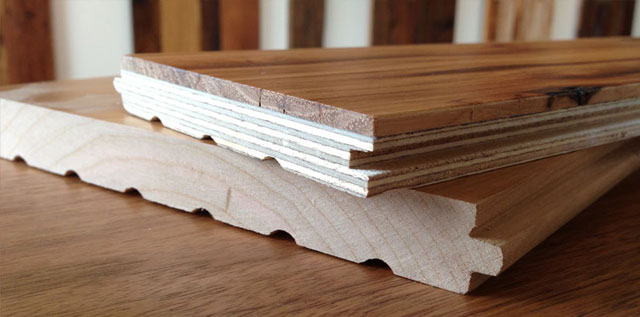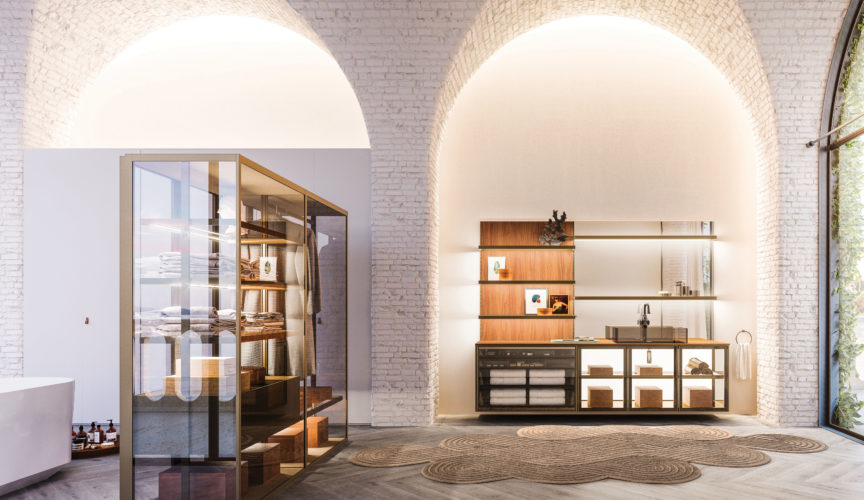How to choose between engineered & solid wood flooring
How do you know if you should choose solid or engineered wood flooring for your project? Both types of planks are made from 100% real wood and deliver a beautiful end-product. The key to making the right choice is knowing the differences between the two: construction, durability, installation, and cost.

CONSTRUCTION
Engineered hardwood is composed of layers of wood. The top is a solid hardwood veneer with substrates of high-quality plywood layers. A high-density fiberboard (HDF) core creates a much stronger bond between wood layers than those found in hardwood and is heavier for superior stability. Solid hardwood planks are created from a single, thick piece of solid wood, from top to bottom. Each plank is created out of a single piece of wood and typically has a thickness of 19mm.
DURABILITY
Durability will ultimately depend on the core construction you choose. While both solid and engineered wood flooring provide durability in active homes or offices, engineered floors can have greater dimensional stability in extreme temperatures. This provides more resistance to buckling or rippling. When it comes to moisture, engineered wood reacts better than solid due to its plywood base. The base is dimensionally stable which means it warps and flexes less easily upon contact with moisture. Fibers in plywood run in crosswise layers, a far more stable structure than solid wood’s parallel fibers.
Solid wood flooring is inherently durable and must be permanently nailed or glued to the subfloor. They are also more prone to shrinking or expanding based on humidity levels. Solid hardwood is never recommended for bathrooms, basements, or other areas where moisture is prevalent. However, it can still resist some moisture. Site-finished wood flooring (as opposed to pre-finished) has a sealed top layer that can shed some moisture. Solid hardwood is more affected by factors like temperature and humidity, which can cause them to expand, contract, and shift.
INSTALLATION
Engineered wood has enhanced installation options due to its unique construction that makes it less likely to buckle, gap or react to temperature. Engineered wood can be installed in living areas, bedrooms, hallways, and dining rooms. Floating, glue, staple, nail—you name it—the choice of installation is yours. It can even be installed below and over radiant heat. This makes engineered wood a great fit for installing above or below ground level. With proper precautions, it can also be installed in kitchens, powder rooms, and below-grade with a proper subfloor if the space has no moisture challenges.
Solid wood can be installed in living areas, bedrooms, hallways, and dining rooms. Same as engineered flooring, with proper precautions solid wood flooring can be installed in kitchens. Solid hardwood expands and contracts with changes in temperature and moisture, so they are only recommended at or above ground level. You should avoid installing in powder rooms, bathrooms, and never in basements. Solid wood flooring can be glued, nailed, or stapled to a wood subfloor, but must have the right amount of space for hardwood’s natural expansion and contraction. If the individual boards are too tight, the floor will buckle. If they are too loose, the gaps between the boards will become too wide with colder temperatures.
COST
Generally speaking, engineered hardwood is less expensive than solid hardwood, but the price will ultimately come down to the quality and species of wood.
PROS & CONS
Solid pros:
- Great durability
- Typically more variety
- Excellent return value
Solid cons:
- Affected by temperature, humidity, and moisture
- Must be installed over select subfloors
- On average, pricier than engineered wood
Engineered pros:
- Same beauty as solid wood
- More tolerant of temperature, humidity, and moisture
- On average, less expensive than solid wood
- Can be installed on a number of subfloor types
- Excellent return value
Engineered cons:
- Not quite as durable as solid wood
- Can only be sanded and stained a few times over its life
Browse our extensive selection of wood flooring here.


